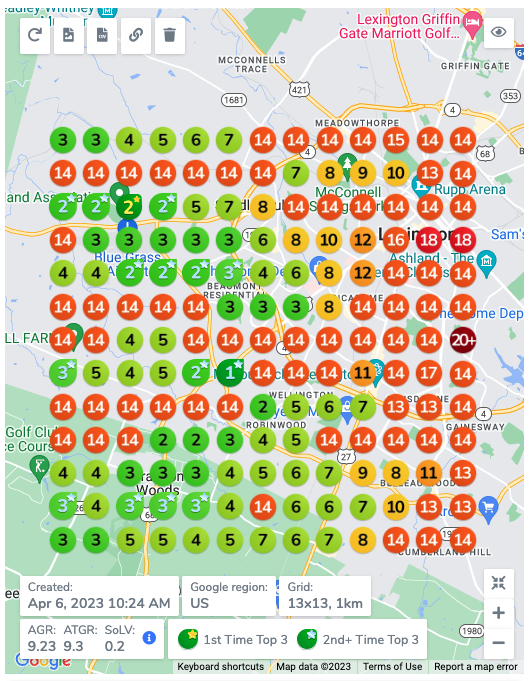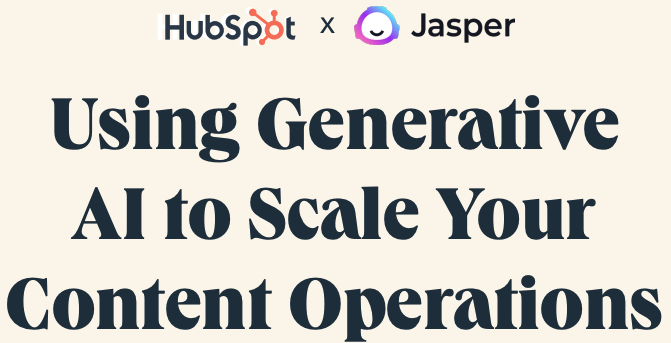Howdy, everyone. No time like the present to plug Nate’s next group talk. We’re going to hold it on April 19 (the Wednesday after next Wednesday) at 2 PM EDT. Nate’s our CTO. He’s been doing AMAs for the past few months. They start off with a new feature demonstration and then progress into a question and answer session with the participants. It’s frankly a great opportunity to get some local SEO insight without paying our consultation fee. You can register here.
 We’d like to get started this week with a little bit of self-awareness. We certainly realize that we’ve covered lots of generative AI lately. Given the many digital marketing implications, we actually feel like that’s justified. The biggest story of all, a revamped Bing search, could not have been overlooked. The idea that someone–anyone–could potentially disrupt online search is at least as stunning as an announcement from OPEC would be if they stated that they were thinking about accepting Mexican pesos for oil payments instead of US dollars (that Mexican flag/oil barrel illustration is what DALL·E 2 came up with when we asked it for a picture of petro-pesos in a comic strip style).
We’d like to get started this week with a little bit of self-awareness. We certainly realize that we’ve covered lots of generative AI lately. Given the many digital marketing implications, we actually feel like that’s justified. The biggest story of all, a revamped Bing search, could not have been overlooked. The idea that someone–anyone–could potentially disrupt online search is at least as stunning as an announcement from OPEC would be if they stated that they were thinking about accepting Mexican pesos for oil payments instead of US dollars (that Mexican flag/oil barrel illustration is what DALL·E 2 came up with when we asked it for a picture of petro-pesos in a comic strip style).
We will stick to pure marketing applications of generative AI from now on. With one last exception. This is pretty nuts.
One of Elon Musk’s lesser-publicized ventures is a company called Neuralink. Neuralink aims to develop a brain/computer interface that will help keep humanity competitive in a future landscape that would otherwise be dominated by artificial intelligence. Imagine immediately multiplying a twenty-digit number by a fourteen-digit number in your head or downloading the ability to pilot a helicopter. It’s supposed to (eventually) let people do things like that.
Anyway, Neuralink has been doing animal experimentation to side-step the ethical quandaries that come along with trying to install a USB-C port in someone’s head. The company announced a breakthrough a few hours ago: they’ve completed an implant for parrots that is wirelessly connected to ChatGPT. It allows you to use your pet as a conduit for conversations with artificial intelligence.
 The reason you’re hearing about this for the first time is because we just made it up. We forgot to observe April Fool’s Day last week. We couldn’t let that slide. Neuralink really is a company whose apparent mission is to give humanity a fighting chance against potentially-oppressive machine overlords, but we have no idea what (if anything) they’re actually working on. Their website might say.
The reason you’re hearing about this for the first time is because we just made it up. We forgot to observe April Fool’s Day last week. We couldn’t let that slide. Neuralink really is a company whose apparent mission is to give humanity a fighting chance against potentially-oppressive machine overlords, but we have no idea what (if anything) they’re actually working on. Their website might say.
In terms of things actually happening, we wanted to let you know that we’ve decided to study the new Google Business Profile insights. In case you’re unaware, Google recently shook up the statistics it has provided to GBP locations since they were known as GMBs.
If any of you have noticed your view counts dropping, it’s because Google calculates them differently now (and not in any marketer’s favor). Unique users viewing your location more than once per day only count as a single view now, and people need to deliberately click your location on Google Maps to get counted as viewers now. In the past, your location got a view added to its tally just for showing up when it appeared in someone’s local search results.
This page on uberall.com has a more complete explanation of why GBP view counts are down. Views aren’t the only metric Google recently started calculating differently though. Since we have millions of locations synced to our platforms, we’ll be able to come up with some big-picture observations about the way Google’s new metrics compare to the old ones. We’ll let you know when the study’s finished in a future newsletter. It’ll be at least a few months from now. We have to let the new data stack up for a while before we can draw reasonable conclusions.

We definitely need to tell you about a sick new feature we just added to Local Viking and Local Brand Manager. Remember a few weeks ago when we told you that an asterisk next to any given node (the circles with numbers in them) in your scheduled GeoGrid searches means that the node now ranks in the top three when it didn’t during your previous scan? Now we’re differentiating between a node in the top three for the first time ever and a node that’s returning to the top three.
Both of those scenarios are good news for your clients. They represent different conversations though. Achieving a top three ranking for the first time is fantastic. Recovering a top three ranking is also great. That’s why we’re pointing these milestones out to you now.

We’ve added ribbon-looking indicators to your scheduled GeoGrid configurations pages to draw attention to your new three-pack nodes. They’re color coordinated. This is unfortunate news for those of us who are colorblind, but easy enough for most eyeball-normies to interpret. A configuration with a blue banner has a node that’s returning to the top three. A green banner means you’ve got a first-time-ever top-three node. A split banner means you’ve got both. No banner means you’ve got neither.
 All right. It’s time to serve up some marketing links for you fine folks before we wrap things up. Here’s an ebook from Hubspot and Jasper called Using Generative AI to Scale Your Content Operations. It’s only 17 large-font pages and it has some useful tips. If you’re doing any marketing for a non-profit, Search Engine Journal has a guide to help you navigate Google’s ad grants. Finally, this page on later.com explains the best time to post on Instagram. The conclusions are based on an analysis of 11 million posts, including Reels.
All right. It’s time to serve up some marketing links for you fine folks before we wrap things up. Here’s an ebook from Hubspot and Jasper called Using Generative AI to Scale Your Content Operations. It’s only 17 large-font pages and it has some useful tips. If you’re doing any marketing for a non-profit, Search Engine Journal has a guide to help you navigate Google’s ad grants. Finally, this page on later.com explains the best time to post on Instagram. The conclusions are based on an analysis of 11 million posts, including Reels.
That’s it for this week. We wish all of the Easter-celebrators in our audience a happy holiday and the rest of you a fantastic weekend. We’ll see you again next Friday.